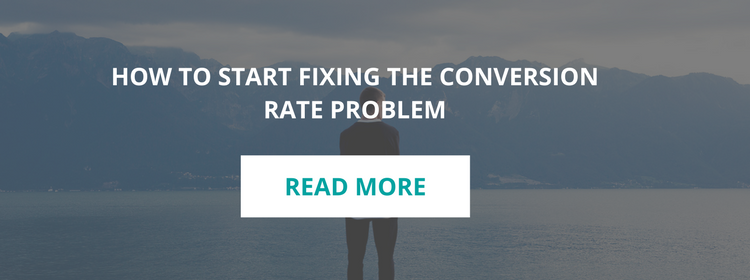How can reducing the number of gated downloads on your website actually help you to improve website conversions? Read on to find out more.
I recently read this great article on Grow and Convert (I can’t help but share their stuff, I love these guys) that made me think a lot about the function of gated content.
It talks about the two most popular schools of thought for achieving ROMI. One being to drive blog readers to join an email list, then nurture them, before finally converting them to a ‘real lead’ with a decision stage offer like a demo or sales conversation.
The other is to go straight for the decision stage offer and skip the nurturing.
Grow and Convert's article really resonated with me. There has to be a really good reason for me to enter my details now, purely because I’m concerned about my inbox becoming even more crowded.
And I suddenly thought: if we’re putting the buyer at the centre of everything we do, why don’t we give them the choice?

Reducing the emphasis on white papers, ebooks, and guides
The foundations of most inbound marketing strategies are made up of blog content that sits proudly on your site, allowing visitors to browse it in their own time, with no download necessary.
A guide that’s stuck in a PDF behind a landing page isn’t getting crawled by Google, and many people at an early stage may not want to hand over their details just yet.
I’m not suggesting that you should suddenly un-gate your offers and leave them floating around your websites. But I am suggesting you consider reducing the number of PDFs.
I am saying that I think we should invest more time in your web pages and blog posts to provide real value to a visitor.
How will your visitors convert if there aren’t any offers?
As I see it, you can actually optimise conversion rates by using a select number of genuinely valuable conversion points on your website. Keep it simple.
1. The newsletter
If you’re investing more time in quality editorial and how-to content, you suddenly have a very real incentive for readers to subscribe. Consider how you will package your newsletter up to appeal to them and provide as much value as possible.
You may well publish a blog post where it’s genuinely helpful to have a checklist or worksheet so that readers can try out some of your ideas themselves. But instead of building a landing page and offers, use a pop-up, ask for a newsletter sign-up instead and then email them.
Your newsletter list is also your top source for marketing research and feedback. Think about it: having their email and their tracking data means you can see what is working and what isn’t.
2. The contact page
This is often the core place you direct site traffic to. Make this page really user friendly and give visitors the option of calling you directly as well as sending a query via a form.
3. The direct requests for help
This may take the shape of a consultation request, a demo, a workshop, or something more specific to your company, but the idea is that it’s a clear request for help from the visitor and therefore an instant MQL (marketing qualified lead).
With marketing automation software, you could even automate the handover to sales to make your life easier.
4. Give the prospect the tools to carve out their own journey
A website should ultimately make a prospect want to contact you. The conversion process should be seen as the way you initially build this relationship with your future customers.
Make your website helpful, clear, and easy to navigate so that visitors can reach out to you. Then step back a little and let your prospects choose how they would like that first step to work.
NOTE: This process won't happen overnight. Creating a website that pulls in a great number of inbound leads has always been a gradual process, and will continue to be so.
Top tips for improving website conversions (and building more meaningful relationships)
So now you’ve simplified your offers, and the options for getting in touch with you are clear, what else can you do? Here are some tips:
- Put the buyer at the centre of everything you do. Your website isn’t about you, it’s about who you can help, and why
- Focus on quality. There is far too much content out there, we’re being drowned in it. Focus on creating informative pages and great blog posts that make a difference to your visitors, and leave them feeling like they’ve learnt something from you.
- Keep your website simple and easy to navigate. Consider running some user research to see if what you thought would work is actually working
Don’t forget to actually pay attention
I can’t stress enough that for all of the best practice blogs and tips for improving your marketing (of which this blog is one), ultimately, success comes in different formats for different businesses.
The only way you can discover if something works is to try it, measure the results and then iterate if these results don’t match your expectations.
Don't wait to make use of your data — paying attention to your prospects and tweaking your marketing to match is the best way to stay ahead of the curve and to stay relevant.
Learn more about improving conversion rates across your site by reading our related article, How to Start Fixing the Conversion Rate Problem.







.png?width=50)

.png?width=50)
.png?width=50)



































